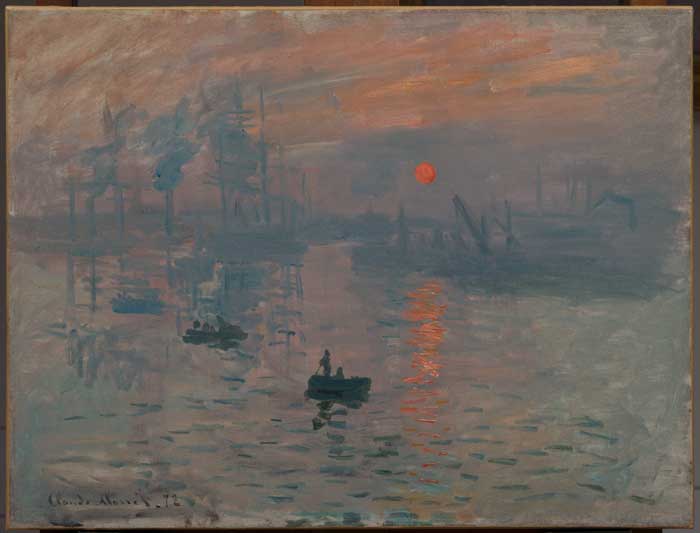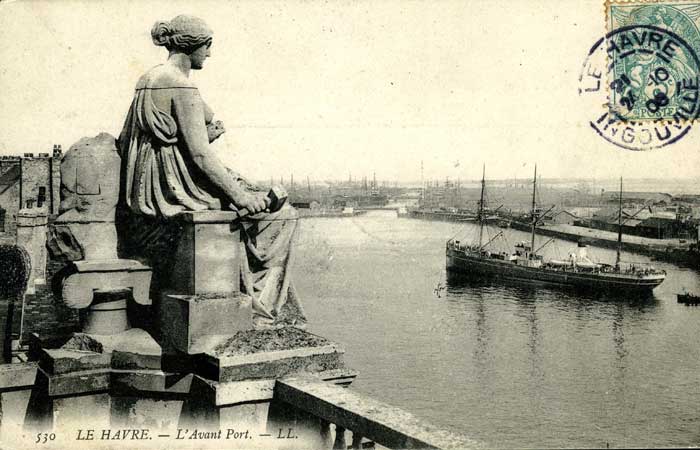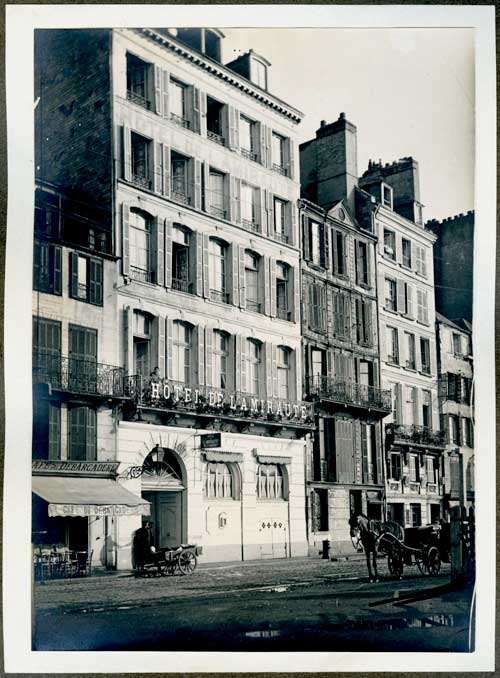정준모
The birth of Impressionism calculated to the nearest minute
Using the position of the sun and the time of high tide, an astrophysicist pinpoints when Monet put brush to canvas
By Martin Bailey. Web only
Published online: 21 August 2014

The birth of Impressionism can now be dated to a precise time: 7.35am on 13 November 1872. New research has identified when Claude Monet painted Impression, Soleil Levant (impression, rising sun), which gave the artistic movement its name. Evidence for the new dating will be presented next month in an exhibition at the Musée Marmottan Monet in Paris, which owns the picture (18 September-18 January 2015).
Until now, it has been unclear whether Impression, Soleil Levant was painted in 1872 or 1873. Monet dated it next to his signature as “72”, but the Wildenstein catalogue raisonné re-dated it to 1873, arguing that the artist worked in Le Havre that spring. The hazy nature of the Impressionist scene has made it difficult to determine the topography of the harbour view, but this was essential to establish the date.
Donald Olson, a professor of astrophysics at Texas State University who has contributed a catalogue essay, began by identifying Monet’s hotel—and even the room where he stayed. He has pinpointed a particular third-floor bedroom with a balcony in the Hotel d’Amirauté au Havre, at 45 Grand Quai. Monet would have looked across the outer harbour, facing towards the Quai Courbe, to the southeast.
Some specialists have believed the painting depicts a sunset, because the picture was entitled “Impression: Soleil Couchant” (setting sun) in an 1878 sale. However, Olson demonstrates that because of the sun’s position towards the east it must have been rising. He also calculated that the sun rises in the position shown in the Monet painting twice each year, in mid-November and late-January. The sun is depicted two to three degrees above the horizon, which corresponds to 20 to 30 minutes after sunrise.
Olson then looked at the level of the sea, since large ships can only pass in or out of the outer harbour for three to four hours at high tide. Taking the sun’s position, plus the high tide, this narrowed down the possibilities to 19 dates in 1872-73.
The next stage of the puzzle was to examine weather reports—to exclude days when cloud would have obscured the sun and to include only days when there was fog. This further winnowed the dates to six: 21 and 22 January 1872, 13 and 15 November 1872 and 25 and 26 January 1873.
Olson then focussed on the plumes of smoke on the left side of the painting, which rise into the sky towards the right. Meteorological reports suggest that this wind direction would have occurred on only two of the six dates, on 13 November 1872 and 25 January 1873.
The final factor is the research of Géraldine Lefebre, a curator at the Musée d’Art Moderne André Malraux in Le Havre. She is convinced that the year “72” inscribed by Monet on the painting is correct, since what we know of Monet’s movements makes it very unlikely he was there the following January. This means that Impression, Soleil Levant depicts the view in La Havre on 13 November 1872, at 7.35am.
All this, of course, is predicated on the assumption that Monet has accurately captured a particular moment. But Olson argues that from “several other Monet paintings from Le Havre, we can be certain that the artist depicted the topography of the port accurately”. An examination of the picture suggests that it was painted quickly, in a single morning, as was characteristic of the new style of painting that Monet originated.
Monet showed Impression, Soleil Levant in Paris in the exhibition of the Société Anonyme des Artistes Peintres, Sculpteurs, Graveurs, which opened on 15 April 1874, in what would later become known as the first Impressionist show. The expression “impressionistes” was coined by the critic Louis Leroy, in a scathing review ten days later in Le Charivari. Now, of course, Impressionism is widely admired, and the picture that gave the movement its name will inevitably attract huge crowds to the Musée Marmottan Monet, which acquired the painting in 1940.

Monet would have looked across the outer harbour, facing towards the Quai Courbe, to the southeast, as in this postcard

The Hotel d’Amirauté au Havre where Monet stayed. Photo: Bibliothèque municipale du Havre
FAMILY SITE
copyright © 2012 KIM DALJIN ART RESEARCH AND CONSULTING. All Rights reserved
이 페이지는 서울아트가이드에서 제공됩니다. This page provided by Seoul Art Guide.
다음 브라우져 에서 최적화 되어있습니다. This page optimized for these browsers. over IE 8, Chrome, FireFox, Safari